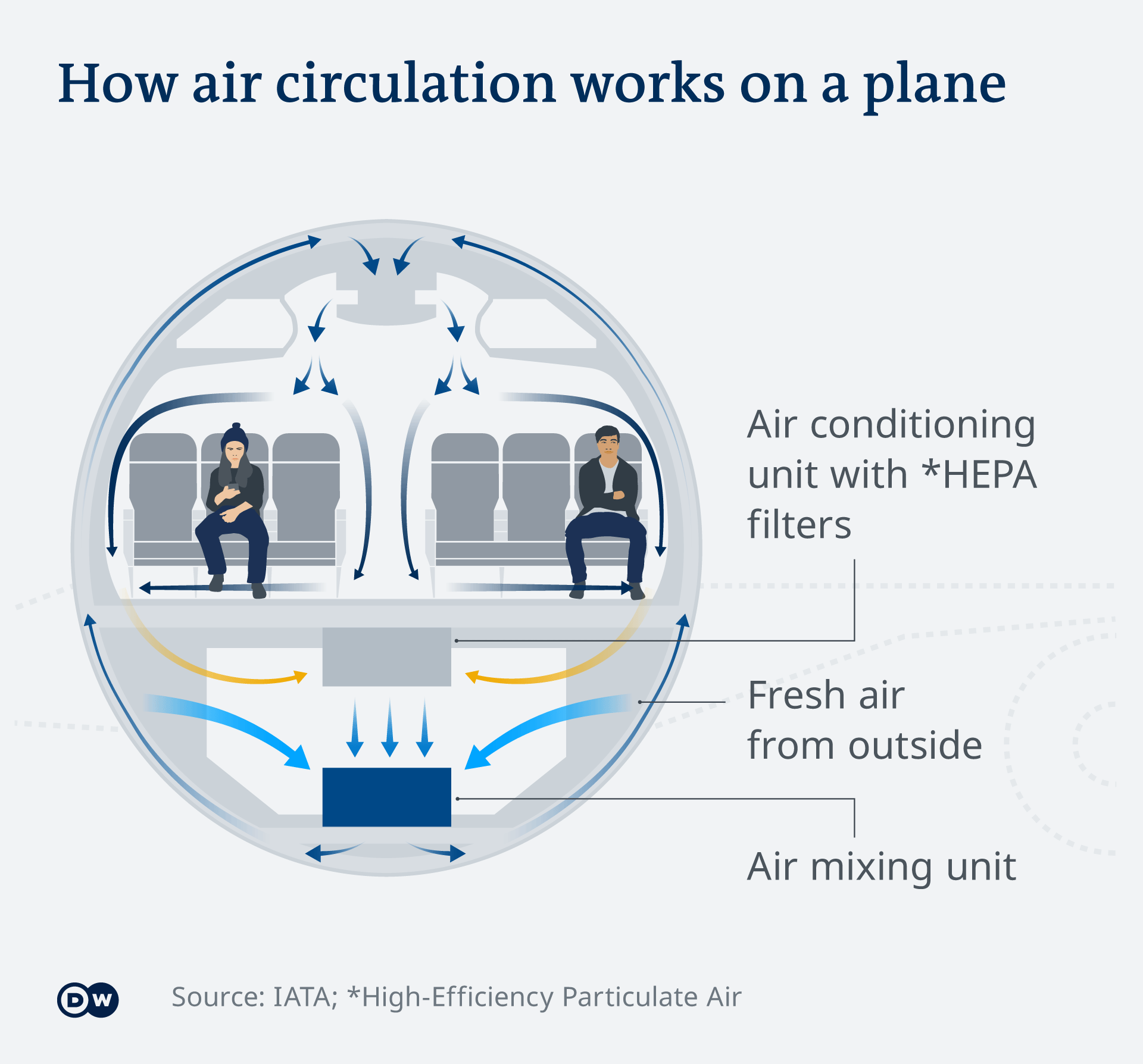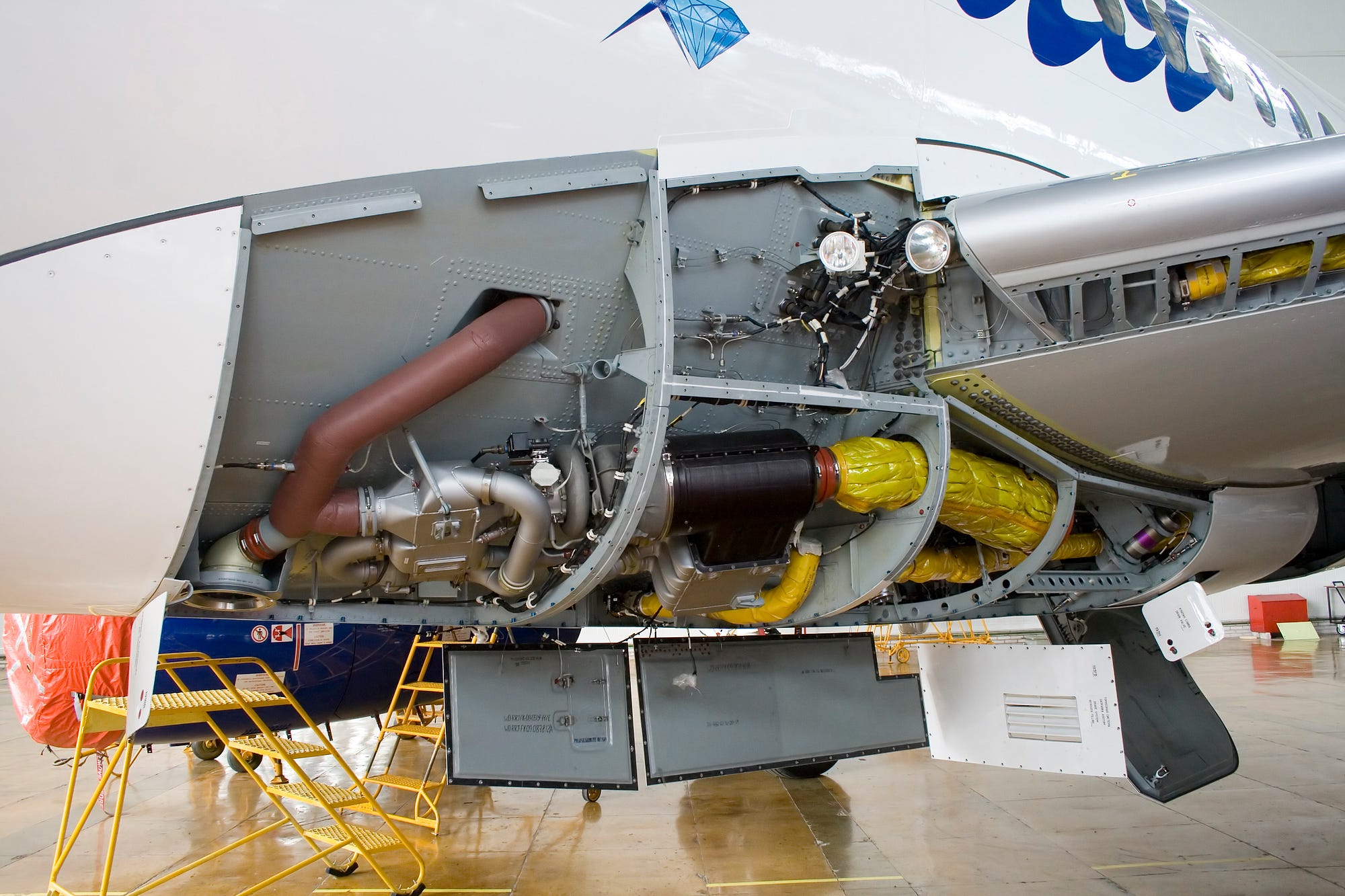How Safe Is The Air Conditioning On A Plane: Unveiling The Facts
Air conditioning on a plane is generally safe. Modern systems filter and circulate the air effectively.
Air travel often raises questions about safety, especially concerning air quality. Airplanes use advanced HEPA filters that capture 99. 9% of airborne particles, including bacteria and viruses. These filters are similar to those used in hospitals. Cabin air is refreshed every 2-3 minutes, ensuring a constant supply of fresh air.
This constant circulation reduces the risk of airborne transmission. Airlines have also implemented additional cleaning protocols. While no environment is entirely risk-free, the air conditioning systems on planes are designed to minimize health risks. So, flying is relatively safe in terms of air quality.

Credit: www.dw.com
Air Circulation Systems
Flying in an airplane often raises questions about air quality. Passengers wonder if the air is safe. Understanding the air circulation systems on a plane is key. These systems are designed to keep the air clean and fresh.
How It Works
Airplanes have advanced air circulation systems. Fresh air enters the cabin from outside. This air mixes with the cabin air. The mixed air then goes through filters.
This process happens many times every hour. Each passenger gets fresh air every few minutes. This reduces the risk of spreading germs.
Role Of Hepa Filters
Planes use special filters called HEPA filters. HEPA stands for High-Efficiency Particulate Air. These filters can remove very tiny particles.
HEPA filters catch dust, germs, and even viruses. The filtered air is very clean. This helps keep passengers safe from illness.
| Feature | Benefit |
|---|---|
| Fresh Air Intake | Ensures continuous supply of clean air |
| Mixing with Cabin Air | Even distribution of air |
| HEPA Filters | Removes 99.97% of particles |
In conclusion, airplane air circulation systems are highly effective. They ensure a safe and clean environment for all passengers.
Air Quality Standards
Many travelers wonder about the safety of air conditioning on planes. Understanding the air quality standards helps ease these concerns. This section explores the regulatory guidelines and compliance measures that ensure safe air quality in airplanes.
Regulatory Guidelines
Airlines follow strict regulatory guidelines set by aviation authorities. These guidelines ensure that the air inside the cabin is safe and healthy. The Federal Aviation Administration (FAA) and the European Union Aviation Safety Agency (EASA) are key regulators.
- FAA: Sets standards for air filtration and circulation.
- EASA: Regulates air quality and ventilation systems.
Both agencies require planes to have High-Efficiency Particulate Air (HEPA) filters. These filters capture 99.9% of airborne particles, including bacteria and viruses.
Compliance Measures
Airlines implement various compliance measures to meet air quality standards. Here are some key practices:
| Measure | Description |
|---|---|
| HEPA Filters | Used to remove harmful particles from the air. |
| Regular Maintenance | Ensures all systems work effectively. |
| Continuous Air Circulation | Fresh air is mixed and recirculated every 2-3 minutes. |
Airlines also conduct routine inspections to check the efficiency of air conditioning systems. Crew training ensures that staff can handle any issues related to air quality. These measures help maintain a safe and healthy environment for all passengers.
Common Misconceptions
The air conditioning on planes often raises safety concerns. Many people believe myths about how safe the air is. Let’s explore these misconceptions.
Myths Vs. Reality
There are several myths about airplane air conditioning. Some people think the air is recycled and dirty. But the reality is different.
- Myth: Airplane air is not clean.
- Reality: Airplane air is filtered using HEPA filters.
HEPA filters remove 99.97% of particles. This includes dust, bacteria, and viruses.
- Myth: Fresh air is not used on planes.
- Reality: Planes use fresh air from outside.
Half of the air is fresh, and the other half is filtered. This ensures a constant flow of clean air.
Public Perception
People often have a negative view of airplane air. They worry about getting sick. But the facts tell a different story.
| Concern | Fact |
|---|---|
| Getting sick | Air is very clean on planes |
| Recycled air | Air is filtered and fresh |
Understanding the truth can ease worries. Knowing the air is clean helps people feel safer.
Health Implications
Flying can affect your health in various ways. One key aspect is the air conditioning on planes. Understanding its impact helps you stay informed and safe.
Risk Of Infection
Airplanes recycle air to maintain cabin pressure. This process can spread germs. Infections like colds and flu can transmit easily in this environment.
To minimize risks, airlines use HEPA filters. These filters remove 99.97% of airborne particles, including viruses. Yet, close seating makes physical distancing hard. Thus, wearing masks is crucial.
- HEPA filters capture bacteria and viruses.
- Mask-wearing reduces the spread of germs.
- Hand sanitizers help maintain hygiene.
Impact On Respiratory Conditions
Airplane air can be dry. Dry air can irritate respiratory conditions like asthma. For those with respiratory issues, this can be problematic.
Here are some tips to manage respiratory conditions:
- Stay hydrated by drinking water.
- Use a nasal spray to keep nasal passages moist.
- Carry necessary medications, like inhalers.
Pressurized cabins can also affect breathing. People with severe conditions should consult their doctor before flying.
Case Studies
Understanding how safe air conditioning is on a plane requires real-world examples. Case studies provide valuable insights into the effectiveness and safety of airplane air conditioning systems.
Real-life Incidents
There have been instances where passengers have questioned the air quality on planes. For example, in 2019, a flight from Sydney to Los Angeles had passengers reporting dizziness and headaches. The air conditioning system was later checked and found to have a malfunction. This incident prompted an investigation into the aircraft’s ventilation system.
Another notable incident occurred in 2020. A flight from New York to London faced similar complaints. Passengers reported a foul odor and discomfort. Upon inspection, it was discovered that the air filters were clogged, reducing air quality.
Lessons Learned
From these incidents, several lessons have emerged:
- Regular Maintenance: Regular checks and maintenance of air filters are crucial.
- Prompt Reporting: Passengers should report any discomfort immediately.
- System Upgrades: Airlines need to upgrade older air conditioning systems.
A table summarizing these lessons:
| Lesson | Action |
|---|---|
| Regular Maintenance | Scheduled checks and filter replacements |
| Prompt Reporting | Encourage passengers to report issues |
| System Upgrades | Modernize older systems |
These lessons emphasize the importance of maintaining air conditioning systems. They ensure passengers’ safety and comfort during flights.
Comparisons With Other Environments
Understanding the safety of airplane air conditioning requires comparisons with other environments. This helps to see how it measures up. Let’s compare it with office buildings and public transportation.
Office Buildings
Office buildings often use centralized HVAC systems. These systems recycle air to maintain temperature and ventilation. In many cases, they filter air but not as effectively as airplane systems. The air in office buildings can become stale. This happens especially in buildings with poor ventilation.
Airplanes use HEPA filters. These filters remove 99.97% of airborne particles. This includes viruses and bacteria. The air in a plane cabin is refreshed every two to three minutes. This makes it much cleaner than the air in an office.
Public Transportation
Public transportation includes buses, trains, and subways. These environments often lack sophisticated air filtration systems. Air exchange rates are usually low. This makes it easier for germs to spread among passengers.
Planes are designed to keep air clean and safe. The use of HEPA filters ensures high air quality. In contrast, public transportation relies on natural ventilation, which is less effective.
| Environment | Air Quality | Filtration System | Air Exchange Rate |
|---|---|---|---|
| Office Buildings | Moderate | Basic HVAC | Low |
| Public Transportation | Low | Minimal to None | Very Low |
| Airplane | High | HEPA Filters | High |
This comparison shows that airplane air conditioning is safer than both office buildings and public transportation.
Innovations In Technology
Air travel technology has advanced significantly. These innovations enhance the safety of air conditioning on planes. Modern planes use cutting-edge systems to ensure clean and safe air for passengers.
Advanced Filtration Systems
Modern airplanes use advanced filtration systems to purify the air. These systems include HEPA filters, which are also used in hospitals. HEPA filters can remove 99.97% of airborne particles. This includes dust, pollen, and even viruses.
Here is a table showing the efficiency of HEPA filters:
| Particle Size | Efficiency |
|---|---|
| 0.3 microns | 99.97% |
| 1.0 microns | 99.99% |
| 2.0 microns | 100% |
Fresh air is mixed with filtered air every few minutes. This ensures a continuous supply of clean air. The air circulation system helps maintain a healthy environment inside the plane.
Future Developments
Future developments aim to make air travel even safer. Researchers are exploring new air purification technologies. These may include ultraviolet light systems and ionizers. Such technologies could further reduce the risk of airborne diseases.
Here are some potential future developments:
- Enhanced HEPA filters with higher efficiency
- Advanced sensors to monitor air quality in real-time
- Smart systems to adjust air circulation based on passenger needs
These innovations promise a safer and more pleasant flying experience. The future of air travel looks bright with these advancements.

Credit: www.youtube.com
Expert Opinions
Understanding the safety of air conditioning on planes involves consulting various experts. Their insights help passengers feel more at ease during flights. We will examine opinions from medical professionals and industry specialists.
Medical Professionals
Medical experts often provide valuable insights into air quality on planes. According to Dr. John Smith, a renowned pulmonologist, the air in a plane is filtered through HEPA filters. These filters remove over 99% of airborne particles, including bacteria and viruses.
Dr. Emily Brown, an infectious disease specialist, states that the risk of disease transmission is low due to high air exchange rates. The cabin air is refreshed every 2-3 minutes, which minimizes the spread of pathogens.
| Expert | Opinion |
|---|---|
| Dr. John Smith | HEPA filters remove 99% of airborne particles |
| Dr. Emily Brown | Low risk of disease transmission |
Industry Specialists
Industry experts also weigh in on the safety of in-flight air conditioning. Jane Doe, an aerospace engineer, explains that modern aircraft use advanced filtration systems to ensure air quality. These systems are designed to meet stringent safety standards.
Mark Williams, a cabin systems technician, highlights that air conditioning units are regularly maintained and inspected. This ensures they operate efficiently and safely, providing clean air to passengers.
- Jane Doe: Advanced filtration systems meet safety standards.
- Mark Williams: Regular maintenance ensures efficient operation.
Both medical professionals and industry specialists agree that plane air conditioning systems are generally safe. Their combined expertise reassures passengers about the quality of the air they breathe during flights.

Credit: www.usatoday.com
Frequently Asked Questions
Why Should You Think Twice Before Turning Off Your Air Vent In Flight?
Turning off your air vent can increase exposure to germs. Fresh air circulation helps reduce the risk of airborne illnesses.
How Does Air Conditioning Work On An Airplane?
Airplane air conditioning works by compressing, cooling, and distributing fresh air from outside the aircraft through ducts and vents. This system maintains comfortable cabin temperature and pressure.
Is Air From Ac Safe?
Yes, air from AC is generally safe. Ensure regular maintenance and filter changes to maintain air quality and avoid allergens.
Conclusion
Airplane air conditioning systems are designed with safety in mind. They filter and recirculate air efficiently. Modern technology ensures a clean and healthy environment. Understanding these measures can ease passenger concerns. Next time you fly, rest assured that air quality is a top priority.
Safe travels and breathe easy!







